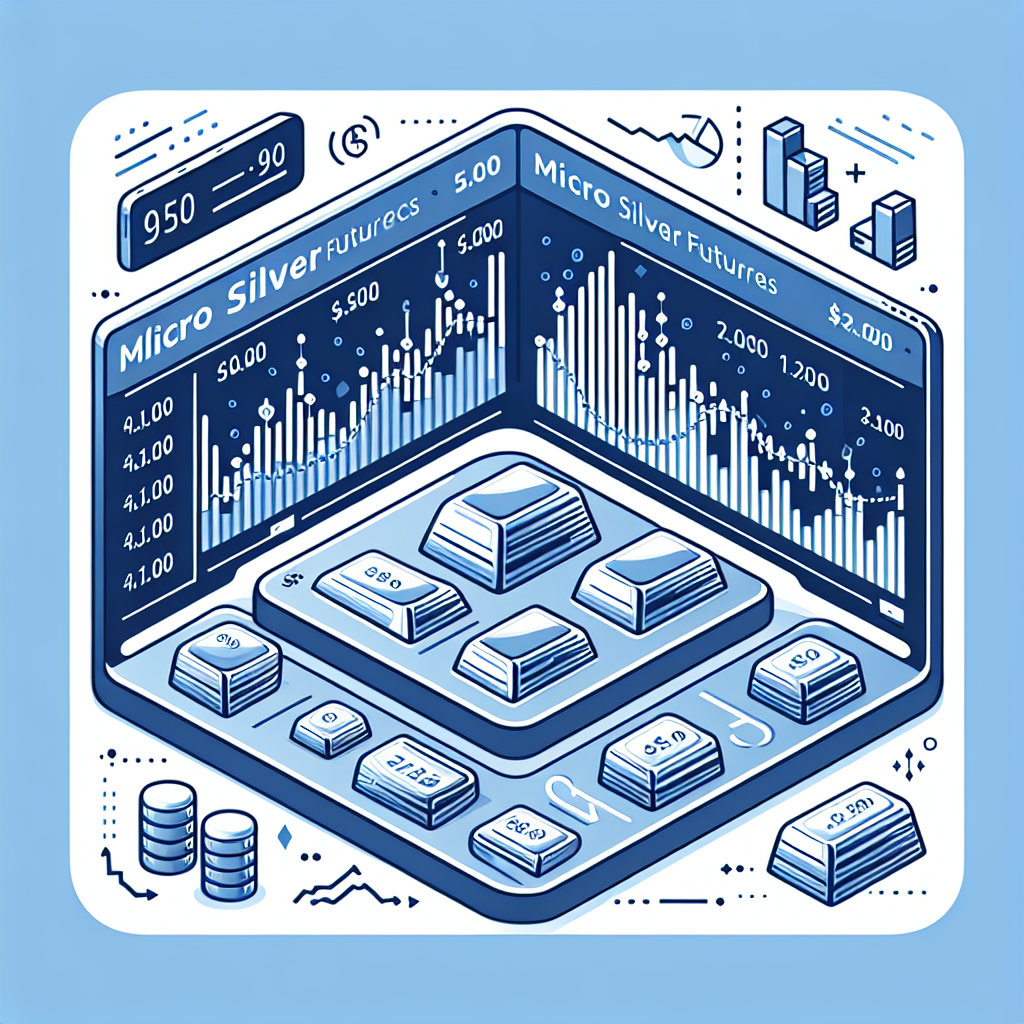How to Create a Trading Plan for Futures Profit

Standing at the edge of the futures market without a map is like heading deep into the woods with no compass. You might stumble onto a bit of luck, but consistent results are nearly impossible. That’s why learning how to create a trading plan isn’t just helpful, it’s the foundation for every trader dreaming of futures profit. Whether you’re just starting or tired of wild swings in your account, a structured approach makes all the difference.
The world of futures trading is filled with opportunity, and risk. With price swings happening at lightning speed, emotions can take over and lead to snap decisions. A sound trading plan helps anchor your judgment, giving you a steady guide through market chaos. It’s not just about picking what to trade or copying someone else’s chart setups. It’s about shaping a personal framework that fits your financial goals, risk tolerance, and trading skills. As you’ll see, a clear plan acts like the rules of the road, turning random guesses into a structured, repeatable process.
Why a Trading Plan Matters
A strong trading plan is your personalized rulebook for navigating the futures markets. Consider the trading plan as your set of instructions before stepping into any trade: it tells you when to enter, how much to risk, how to exit, and how to measure your progress. Without this structure, your results will often come down to chance, not skill or strategy trading.
Traders who know how to develop a trading plan experience fewer emotional swings, make fewer rash decisions, and are more likely to achieve long-term growth. That’s because a trading plan removes much of the emotional guesswork. Instead of acting on fear or greed, you act according to a logical framework. For example, if you’ve predetermined that you’ll exit a losing trade at a certain point, you’re less likely to let losses spiral out of control, a top reason why so many new traders fail.

Common Mistakes Traders Make Without a Plan
Jumping into futures trading without a plan is like building a house without a blueprint, a risky approach guaranteed to bring problems. Many beginners fail to understand what is a trading strategy, which means their approach is inconsistent and driven by emotion rather than logic. This leads to several common mistakes that can quickly erode capital.
One frequent issue is trading without clear entry or exit rules. Without defined parameters, traders may hold onto losses hoping they’ll recover, or exit winning trades too early out of fear. This unpredictability not only hurts results but also damages confidence, making it hard to stick with any strategy, simple trade strategies included. Even the best profitable trading strategy can fail if you ignore discipline.
Another mistake is misunderstanding or completely overlooking risk and money management. New traders often risk too much capital on a single trade or chase losses, believing that a big win will fix previous mistakes. Unfortunately, this lack of structure often leads to blowing up their accounts. Using a trading plan template with set risk controls can help, but it’s essential to truly follow it.
Overtrading is another trap. When traders don’t have a plan, they’re tempted to enter trades simply out of boredom or FOMO (fear of missing out). This often leads to lower-quality decisions and unnecessary losses. Strong trading platform choices can support discipline, but only when combined with a robust plan.
How to Pick the Right Futures Market to Trade
Finding the best futures market to trade can be overwhelming. From commodities like crude oil and gold to equity index futures such as the E-mini S&P 500, the possibilities are vast. The key is to align your choice with your goals and capital, not just jump into what’s popular.
Choosing the Right Futures Contracts
The first step is understanding what to trade. Each futures contract has unique characteristics: volume, volatility, margin requirements, and hours of operation. Picking the right contract depends on your knowledge, risk appetite, and strategy. For example, high-liquidity contracts like the E-mini S&P 500 offer tight spreads and fast fills, making them ideal for day traders using simple trade strategies. In contrast, markets like crude oil or natural gas can see rapid price spikes, suited for more experienced traders with solid risk controls in their trading plan.
It’s wise to start with one or two markets until you’ve mastered their behavior. Research past price movements and news events that impact the market. Resources like CME Group’s Education section provide deep dives into contract specs and trading sessions, helping you make better decisions. Reviewing a sample trading plan can also show how traders structure their approach to different markets.
Matching Markets to Your Capital and Risk
Your trading capital will determine which markets are accessible and how aggressive you can be. Smaller accounts might start with micro contracts, which require lower margins and allow finer position sizing, a crucial strategy trading advantage for beginners. Matching your choices to your risk tolerance is essential. Never risk more than a small percentage of your account on a single trade. That way, a string of losses won’t wipe out your progress.
Review each market's minimum tick values, margin requirements, and daily trading ranges. This information is often found directly on exchange websites and can be added to your trading plan template for easy reference. By aligning your market choices with your available resources, you’ll avoid overexposing yourself to unnecessary risk.
How to Create a Trading Plan
Building your own trading plan isn’t about copying someone else’s steps. It’s about shaping a document that reflects your goals, risk, and preferences, then following it with discipline.
Set Goals and Define Success
Begin by writing down what success looks like to you. Is your goal to supplement your income, build wealth steadily, or trade full-time? Set measurable objectives, such as a target percent return per month or a maximum loss you’re willing to accept weekly. Reviewing an industry background page can help clarify what experienced traders aim for, giving you a real-world example of a trading plan in action.
Good trading strategy starts with realistic, time-bound goals. For example, aiming to earn $500 per month with a $10,000 account is clear and achievable, while hoping to “win big” with vague plans is not.
Entry and Exit Rules
A clear exit plan keeps emotions in check. Example: “Enter long when the 20-period moving average crosses above the 50-period on the 5-minute chart; exit if price drops 1% below entry or hits a 2% target.” Add these rules to your trading plan template for easy reference and stick to them in every trade.
Risk and Money Management
Decide in advance how much capital you risk per trade. Successful trading methods recommend risking no more than 1-2% of your account on each trade, protecting you from big losses. Include this percentage in your plan. If you’re trading micro contracts, your risk per trade may be as low as $20-$30. Adjust your position size to match your account size and comfort level.
Reviewing and Adjusting
A robust plan always includes periodic reviews. Set a schedule to review your trades weekly or monthly. Log what worked and what didn’t. Use a performance journal or trading log, and note if market conditions changed or if you slipped from your plan. Adjust your trading plan as you learn, just as professional traders do.
Using these steps, you’ll have a trading plan template that’s a living document, not set in stone, but evolving with your skill and experience. Committing to a review process leads to continual improvement and helps you become a successful trader with time.

Strategy Trading vs. Simple Trade Strategies
Strategy trading usually relies on detailed rule sets, multiple technical indicators, and sometimes algorithmic systems to spot opportunities. This approach can help remove emotions from trading, as every action is programmed or scripted. Many successful traders develop highly technical strategies after years in the market, but this level of detail isn’t necessary to start.
In contrast, simple trade strategies aim for clarity and repeatability. An example of a simple strategy is using support and resistance levels to enter trades or trading breakouts above previous highs. While these approaches might sound basic, their strength is in their consistency and easy execution. For instance, many traders use moving average crossovers or basic candlestick patterns to make their decisions, no complicated algorithms required.
Finding a Profitable Trading Strategy
No two traders are exactly alike. Finding your own profitable trading strategy means experimenting and evaluating what actually delivers results for you, not just chasing what looks good in hindsight.
What Makes a Good Trading Strategy?
A good trading strategy has a clear edge. It could be a repeatable pattern, a statistical trend, or a market inefficiency. Key elements include well-defined entry and exit criteria, robust risk management, and alignment with your trading time frame and risk comfort.
For example, if you trade equity index futures in the morning, your plan might focus on the first 90 minutes of the trading day, targeting breakout moves. Another trader might focus on mean-reverting spikes in low-volume overnight sessions. In both cases, testing and documenting each step in your trading plan template is essential. A sample trading plan can help clarify what you need to include for your strategy to succeed.
Testing for Profitability
Testing, also known as backtesting, involves applying your strategy to past market data to see how it would have performed. This process helps eliminate guesswork and offers proof that your plan can succeed in real markets. Use a trading platform or even free tools offered on educational sites like Investopedia to practice before trading with real money.
Analyze your results: Is your strategy consistently profitable? Do you have a losing streak that would stress your risk management? Adjust rules and retest until you’re confident in your edge.
Successful Trading Methods and Trader Habits
Consistent trading results come from more than just technical knowledge. The mindset, habits, and discipline you bring to the table are crucial for long-term success.
Successful traders understand that trading isn’t about guessing, it’s about building and following a structured system. The most effective methods often combine technical analysis, risk management, and emotional discipline. Technical strategies like trend-following, mean reversion, and breakout trading help identify high-probability setups, but these strategies only work when paired with strict rules for managing risk. That means setting stop losses, taking profits consistently, and never risking more than a small percentage of capital on a single trade. Another proven approach is to develop a routine for market preparation, scanning charts, reviewing economic news, and analyzing volatility before entering a position. Successful trading methods are less about predicting the market and more about having a repeatable process that puts probability on your side over the long term
Mindset of Winning Traders
Winning traders think in terms of probabilities, not guarantees. They know that no strategy wins all the time, and they accept losses as part of the business. Emotional resilience is key. When they lose, they analyze and adjust. When they win, they don’t get overconfident but stick to their trading plan.
Skillset of Successful Traders
Top traders keep learning and stay adaptable. They develop skills in technical analysis, risk assessment, and self-review. Many use journals to track their thought process and refine their approach based on real data, not just intuition. Building these habits takes time but delivers lasting results.
Building Discipline
Discipline is doing what needs to be done even when motivation fades. For traders, this means entering only valid trades, respecting stop-losses, and never “revenge trading” after a loss. Tools such as reminders, alarms, and checklists can make discipline easier. Joining trading communities can reinforce positive habits.
Final Words: Why Futures Traders Need a Trading Plan
Trading without a plan may feel adventurous, but it rarely leads to reliable profit. Building and following a trading plan is what separates short-term gamblers from long-term professionals. Your journey to discover what to trade, set realistic goals, and develop good trading strategy habits pays off not just in profits but in confidence and growth as well.
If you’re committed to taking your trading seriously, don’t leave your future to chance. For practical tools and tips to put your plan into practice, check out resources tailored for futures traders. That’s the first step toward becoming a confident, successful trader, one disciplined move at a time.








